A Burren Farm Visit
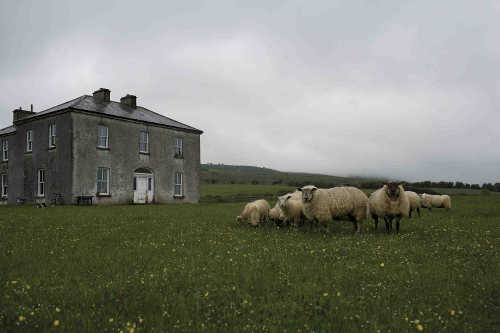 Aoife Carrigy heads off on a very unusual trip to Co Clare
Aoife Carrigy heads off on a very unusual trip to Co Clare
It’s hard to resist an invitation of tea at Father Ted’s house. Especially when it’s to be followed by lunch at the Robson family farmhouse in the heart of the Burren, prepared by ely’s executive chef Ryan Stringer and with wines, craft beers and cider specially selected by sommelier Ian Brosnan. Throw in talks from BurrenLife conservationists, the Burren Smokehouse and the Burren SPUD project and it’s no surprise we set off from ely chq with a bus full of ely staff, bloggers and journalists.
“We’ve been in business 15 years and we’ve never organised a trip to the farm, so we thought it about time,” says Erik Robson, who runs the three ely outposts in Dublin with his wife Michelle. Nestled in the rugged limestone highlands, the farm in question is run by Erik’s father Hugh, who supplies ely with organic beef and rare-breed pork.
The restaurants’ organic lamb – dubbed Craggy Island Lamb – comes from just over the hill where the Robson’s neighbour Patrick McCormack is real-life custodian of the bricks-and-mortar HQ of the ecclesiastical sitcom.
‘Careful now’ warns the sign propped at the front door. Nobody bats an eyelid at the pair of horses wandering amongst the sheep either side of the driveway. Inside, we move Mrs Doyle’s hat and an oversized rubber plate of sandwiches off the sofa before settling in for tea and homemade scones and a chat with Pat, who turns out to be a born storyteller.
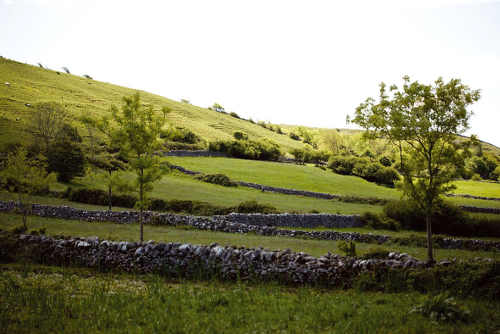 “There’s an extravagance to the Burren,” exclaims Pat, who thinks he’s the luckiest man alive to be continuing a farming legacy that dates back over 6,000 years in these very hills. Their free-draining limestone acts as “a giant radiator”, he tells us, storing the summer’s heat for the winter months when cattle are brought upland for ‘winterage’.
“There’s an extravagance to the Burren,” exclaims Pat, who thinks he’s the luckiest man alive to be continuing a farming legacy that dates back over 6,000 years in these very hills. Their free-draining limestone acts as “a giant radiator”, he tells us, storing the summer’s heat for the winter months when cattle are brought upland for ‘winterage’.
In between explaining these unique local farming practices, Pat references the Celtic philosopher John Moriarty on how a connection with the land can shape its people, and quotes American poet David Wagoner about what we lose when we lose that connection. “Stand still!” he cries with an urgency that suggests the ‘Careful now’ sign may be more than just a bit of fun.
Back on the bus and over the hill, Erik points out cattle grazing in the nook of the valley. “Where those cows are now is actually Europe’s biggest turlough,” he explains. “That stream floods the valley floor every winter and turns it into a seasonal lake.”
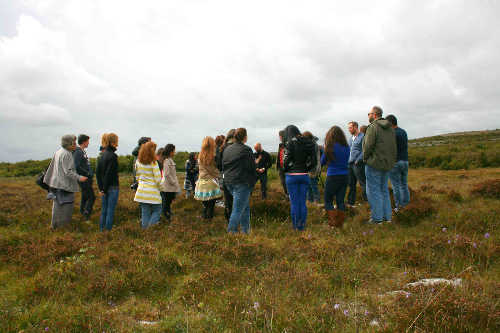 Just as well the cow’s have the rich grazing of their winterage on the hills to look forward to. And just as well for the flora of the hills too: research has shown that those winter grazing traditions play a crucial role in maintaining the biodiversity of the region. The Burren is home to three-quarters of all of Ireland's native flowers – including most of the Irish orchid species – as well as to a rich fauna.
Just as well the cow’s have the rich grazing of their winterage on the hills to look forward to. And just as well for the flora of the hills too: research has shown that those winter grazing traditions play a crucial role in maintaining the biodiversity of the region. The Burren is home to three-quarters of all of Ireland's native flowers – including most of the Irish orchid species – as well as to a rich fauna.
We take a detour to spy the web of the rare Marsh Fritillary at the BurrenLife butterfly sanctuary on the edge of the Robson farm. “We have made conservation a product,” explains Dr. Sharon Parr of BurrenLife’s Farming for Conservation project.
Under the EU Habitats Directive, Ireland is obliged to maintain the listed habitats in the Burren in 'favourable conservation status'. They do so by incentivising farmers to continue the traditional practices which have shaped the landscape over millenia. Many locals farmers are now earning more from maintaining ‘species-rich farmland’ than from the cattle which, for some, has become a ‘by-product’.
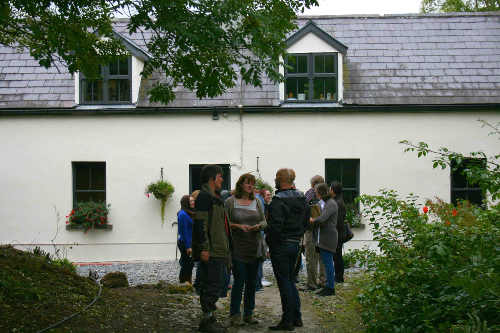 Enriched by this inspiring success story, we arrive at the whitewashed farmhouse where the smell of roast beef and porchetta wafts out to greet us. Maybe the free-range pigs caught wind of the lunch too.
Enriched by this inspiring success story, we arrive at the whitewashed farmhouse where the smell of roast beef and porchetta wafts out to greet us. Maybe the free-range pigs caught wind of the lunch too.
There’s a few matriarchal sows holding court by the main cattle shed, and a pair of pigs spooning in their pen. But the rest have escaped the idyllic tree-sheltered field they normally call home to go walkabout on the farm. Hugh is unperturbed: life is too good for them here to be gone long.
Inside the table is heaving with modern Irish farmhouse fare. There’s beetroot pickled eggs and beef tongue with black truffle. Perfectly roasted beef with pickled onions and horseradish, and porchetta cooked for 26 hours at 60ºC. Caraway-seeded goats gouda, and smoked organic salmon marinated in kombu and dillisk to umami-tastic effect.
There’s stylish wine too of course: a classic Rhone blend of Marsanne-Rousanne to start, in the form of the Yann Chave Crozes-Hermitage Blanc, followed by an elegant Spanish Syrah from Castell d’Encus in DO Costers del Segre. And there’s Orpens Irish Cider and O’Haras Curim Gold and Trouble Brewing’s Sabotage IPA. All in all, it’s a feast fit for a fifteenth birthday celebration.
We chat over lunch about the role traditional farming methods play in preserving the fragile landscape of the Burren (www.burrenlife.com), as well as the role of public art in strengthening local communities (www.x-po.ie) and of the humble spud in tackling global food security (www.deirdre-omahony.ie/public-art-projects/spud).
As the autumnal evening draws in, we bundle ourselves on the bus back to the IFSC where Oktoberfest is in full swing. The magic of ‘Burren time’ feels like a world away rather than just a few hours down the road. It’s good to know it is in the good hands of so many committed caretakers.
[Reproduced with kind permission of Food&Wine Magazine.]
 ---
---
Aoife Carrigy is a food and wine writer, editor and blogger (holymackerel.ie). She is a regular contributor to FOOD&WINE Magazine as well as writing for the likes of The Irish Independent and The Sunday Times, and she lectures in journalism at the Independent College Dublin.
Aoife was co-author of The Ard Bia Cookbook and general editor of The ICA Cookbook, The ICA Book of Home and Family and, most recently, The ICA Book of Tea & Company.





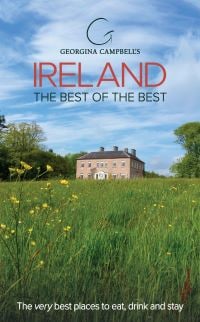
There are currently no comments
Leave a comment
Not a member? Register for your free membership now!
Or leave a comment by logging in with: